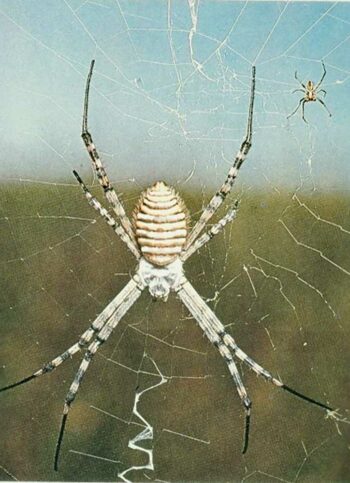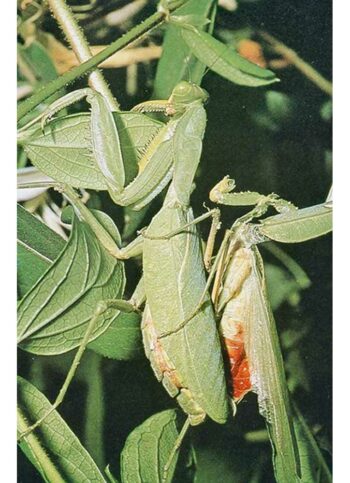It’s the woman who chooses…
By Machteld Roede
Translated into English by Greg Suffanti
All images from my personal archives unless otherwise noted.
A Red-Hot Hangover
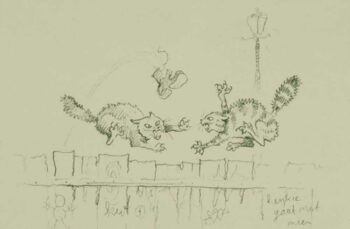
In his column in the Dutch newspaper De Volkskrant, Sander Donkers recently wrote about a red Tomcat ‘who mounted females whenever he felt like it’.
However, it is the female of the species in birds and mammals ― except in humans ― who typically make such decisions, especially when it comes to felines.
A cat in heat spins around and decides when she’s ready, and she then unceremoniously casts her male partner aside after completing the act.
Horse breeders know all too well that if a stallion doesn’t like the mare, it’s the end of the story. The same is true for the bitch in fending off unwanted canine advances..
A male looking for sex has to be careful…
Watch Out with Spiders
A male spider must be careful that he is not regarded as prey when approaching a female, who is typically much larger.
In some species the male vibrates the female’s web to indicate that he is a lover, not prey. Or, he offers her a snack to eat while he fertilizes her.
Beheading the Praying Mantis
In the world of the voracious praying mantis, mating is deadly business. After the male approaches the female from behind and introduces his ovipositor to her, she bites his head off and devours it.
This cannibalistic meal provides the female with valuable substances for future egg production. Another explanation is that by severing the nerve pathway of the male, the ovipositor is shocked into being a better sperm transmitter.
With a Stopwatch by Artis
We often walked around Artis, because as biology students we received a free Artis pass in order to study at the Zoological Laboratory of the University of Amsterdam, which is located there. At one of his first freshman lectures, Professor Evert Slijper encouraged all of us to carry a stopwatch so that we could time the copulating animals we encountered.
“Valuable information ladies and gentlemen, about which unfortunately, far too little is known.”
Foreplay with Two Camels
I’ve never witnessed an actual camel mating, but I did once see signs of foreplay that lasted for several days between two camels. To entice the female to kneel, which makes for easier mounting, the male kept biting her lower front legs. However, she didn’t immediately acquiesce, and finally, bloody patches of loose skin hung just above her hooves.
Ducks are the Exception
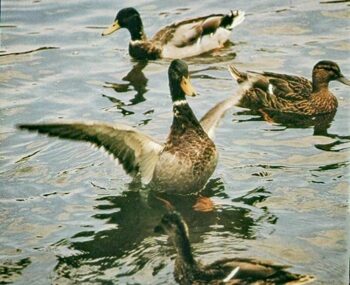
An exception are ducks, where it is the male who forces the female to mate.
In addition, a female can drown as an oversexed drake repeatedly tries to mount her, sometimes with several drakes trying to mount her at one time, pushing her head under water for too long until she finally drowns.
However, this derailed behavior could be attributed to humans overfeeding the ducks with bread.
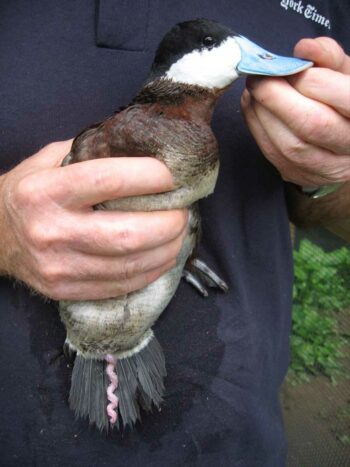
Male ducks, just like geese, possess an unusually long corkscrew shaped penis (about 10 to 30 cm, and in some species even longer) which needs to be inserted very deep into the female for fertilization to occur.
While in other bird species, the usual form of fertilization consists of pressing the cloacal openings of both partners against each other for the transfer of sperm.
Graceful Courtship for Hours
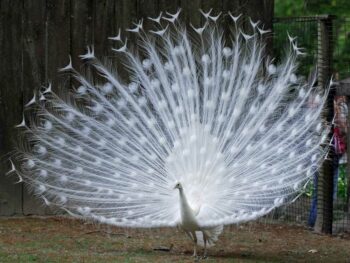
Many bird species display graceful and loving courting rituals that last for hours, whether on the water, on land or in the air. This is to reduce possible aggression between the couple.
Male peacocks are usually more colorful than the females. While showing off to a potential mate, the male erects his wings and his long tail feathers.
The male can also show off by offering snacks such as fish to the often begging female. This is a tacit promise to provide her with food while breeding and/or to help feed the newly born chicks when they arrive.
Spawning
Also in fish, it is the female that determines the ‘moment supreme’ by spawning first, after which the male sprays his milt over the newly deposited eggs.
However, species like colorful koi/carp chase the female, pressing her flanks, which are swollen by her enlarged ovaries, promoting the spawning process. While the Stickleback accomplishes this by chasing mature females through their narrow, tunnel-shaped nests constructed with plants.
Harems

Bij uiteenlopende diersoorten heeft het mannetje een harem, zoals gorilla’s, edelherten, pelsrobben, zeeleeuwen of zeeolifanten.
De haremman is wel dubbel zo groot als zijn vrouwtjes, maar ook hier lukt de paring alleen wanneer het van tevoren veelal veel misbaar makende vrouwtje het toelaat. Wanneer ze hem niet de sterkste kandidaat vindt kan ze op het laatste moment nog voor een andere man kiezen.
Bij gibbons, ook mensapen, zijn daarentegen man en vrouw even groot, en ze zijn monogaam. Het vrouwtje bewaakt dit, door andere geïnteresseerde vrouwtjes weg te jagen.
And Humans?
Only in our human species do we find males imposing their wills to sexually subordinate the female. We need only look to the MeToo# movement to see stories of men abusing their powers to sexually abuse women.
Yet, the differences in mating behaviors between humans and animals cannot be too sharply drawn. Showing off and gift bearing during courting are behaviors easily recognizable in humans. And let’s face it, nowadays it’s not always the man engaging in these activities, as well as deciding when the love making begins. In this day and age the modern Western woman can take the initiative and still be considered a lady of morals..
Notes
[1] Source: Sparks, J. (1977) Krolse katten. Uit: Dierlijke Passie & Paring, seks en erotiek in de dierenwereld. Tekeningen van Co Loerakker. Utrecht: Het Spectrum.
[2]From my lecture ‘Sex, Yes of Course!’
[3] https://bioone.org/journals/the-auk/volume-134/issue-4/AUK-17-114.1/Evidence-of-phenotypic-plasticity-of-penis-morphology-and-delayed-reproductive/10.1642/AUK-17-114.1.full Retrieved on 2021-10-21
[4] Source: white peacock

